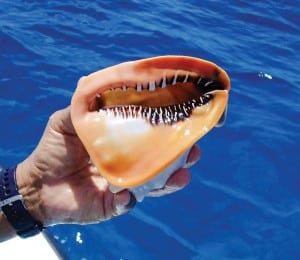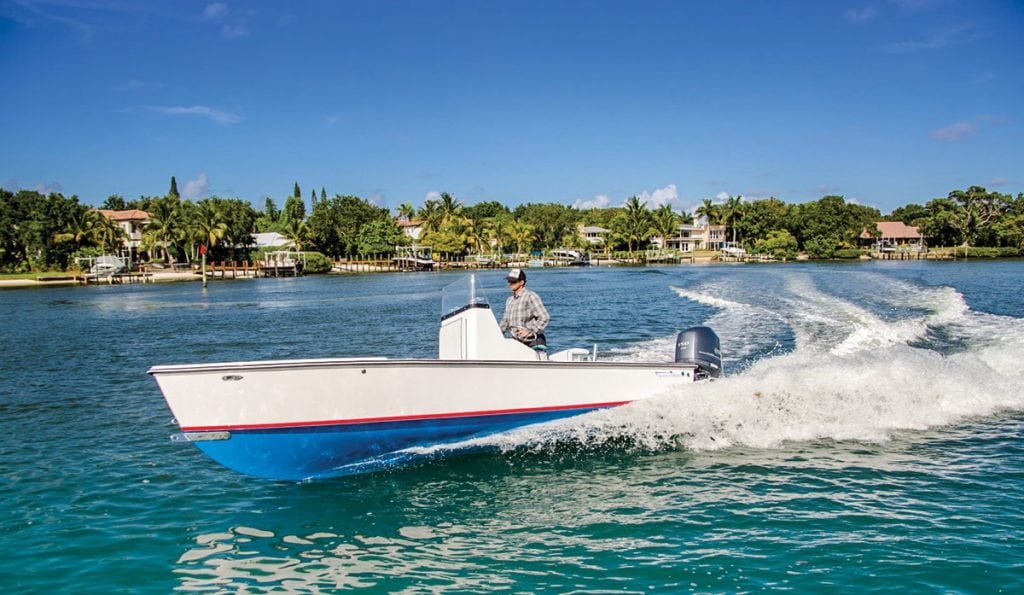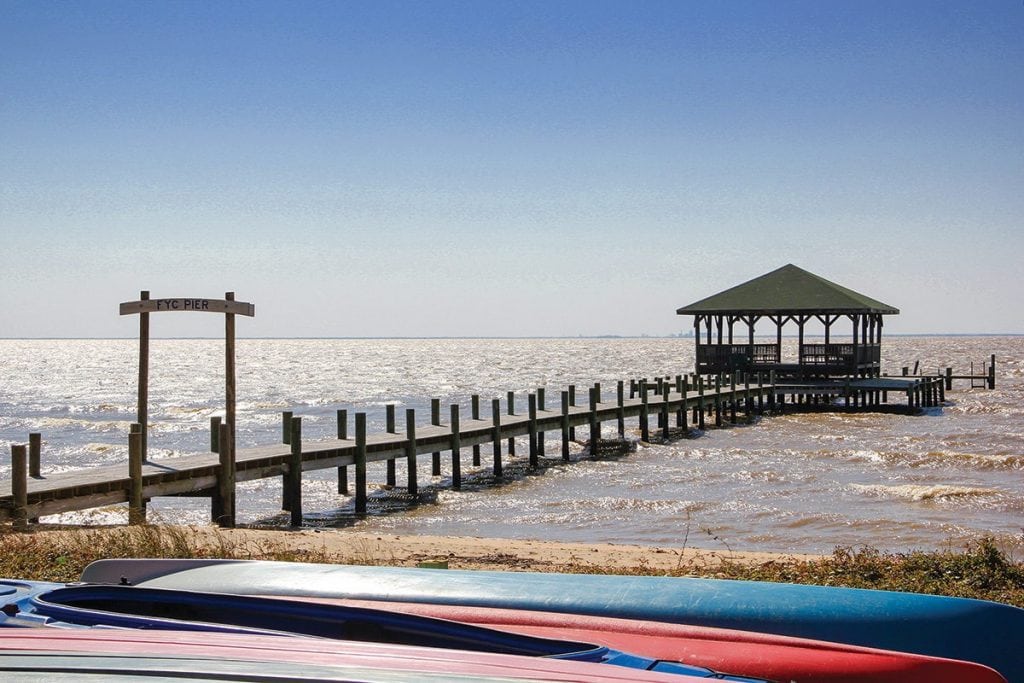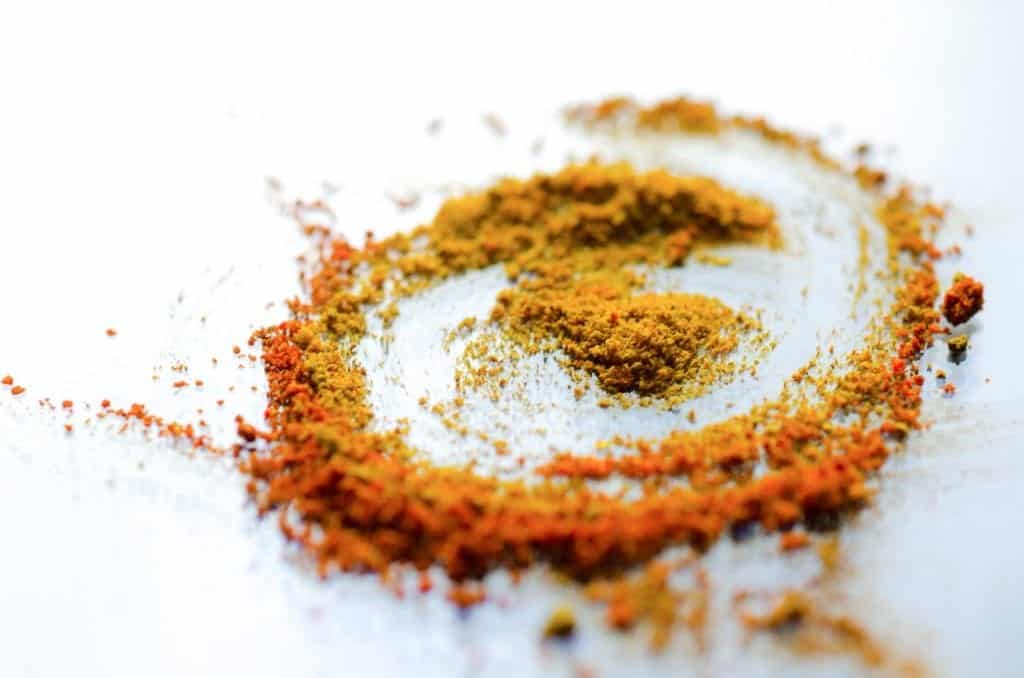For those who want to own a really fine boat and be part of a Bahamian tradition, Spanish Wells Boatworks of Riviera Beach, Florida, has reintroduced the Spanish Wells Marine skiff. In the 1980s Chris Morejohn designed a 19-foot improved version of the Albury speed boats that were then the primary outboard skiff of the Spanish Wells fishermen. More than 150 boats for the Spanish Wells fishing fleet, other fishermen and amateurs were built. About 15 years ago it became too expensive to build these boats in Spanish Wells, and many of the crawfishermen were pushing harder in rougher weather and wanted larger boats. Spanish Wells Marine stopped building and fishermen began to switch to Pangas and Makos—though there are still plenty of Marine skiffs in service.
The molds for the Marine skiffs were sold and had a checkered history, but they were recently recovered and refit by Spanish Wells Boatworks. The new boats have the same general hull shape, but they are built lighter and out of better materials. They also have a raised interior deck to make the boat self-bailing and provide for larger tanks. All the boats are semi-custom, so there are a variety of great ways to outfit the boats.
The Marina skiff is among the finest kind of boats for The Bahamas, and it is wonderful to know it has been reborn with significant improvements. spanishwellsboatworks.com
Guard Your Health
Medical facilities in The Bahamas and Family Island clinics—which provide good, basic care—continue to improve. On the advice of a Family Island clinic’s doctor, I recently flew to Nassau and received excellent care in the emergency room of Doctor’s Hospital. Make sure to check with your insurance for international coverage.
Cruisers should always be prepared to administer first aid and CPR training. At least two people on board should have some level of medical training in the event the medically trained person requires emergency assistance. Start with the basic Red Cross courses and certificates. If you have unusual medical conditions or are planning an extended ocean voyage, you may want further training and knowledge.
Many medical kits are available (West Marine offers a good range for coastal and offshore waters). Your kit should contain a first aid manual and a comprehensive book such as The Ship’s Medical Chest and Medical Aid at Sea.
Discuss your trip with your family doctor, who can give you advice on your individual risks and special needs. This is especially important for people with chronic conditions such as diabetes, heart disease and allergies. Plan for the proper supply of prescription medicines and inquire about defibrillators, oxygen, IVs, and other advanced supplies you might need.
Communication is critical. Be certain to have emergency contact numbers on hand and at the ready such as the U.S. Coast Guard (305) 415-6800 or the Royal Bahamas Defense Force (242) 362-2494.
Going through the “what ifs” can be an effective exercise. What if the Captain is completely disabled? What if someone has a heart attack? What if someone sustains a spinal injury? What if our vessel is struck by lightning and we lose installed communications? Plan and gain more confidence as you depart familiar shores. The better prepared you are, the more you can enjoy cruising.
Ongoing Upgrade
The Bimini Big Game Club Resort & Marina has completed the first phase of a $5.6 million renovation that includes the construction of a new and larger family pool and the refurbishing of the 75-slip marina (docks A and B), among other major improvements. With a new mantra that reflects its facelift—“Come on in—the water’s fine”—the Bimini Big Game Club Resort & Marina, just 50 miles away from South Florida, has long been a favorite destination for those looking to experience Bimini’s true island feel. A second phase of work, that will include the re-build of a C dock, is scheduled to be completed in the fall. biggameclubbimini.com

Beachcombing
Beachcombing is especially fun in The Bahamas. Take a heart-healthy walk on a gorgeous beach and look for the rare, the common and the beautiful. Search the wrack and intertidal zones for sea beans, shells, sand dollars, sea glass, and the elusive glass ball.Don’t take any living organisms. Shelling is not allowed in national parks, but that leaves hundreds of miles of beaches. There are shelling fanatics who play the tides, take only prime specimens, and have spectacular collections.
Navigation Notes
Cape Eleuthera: Only the small red and green buoys at the entrance are still in commission. There are no range markers. The entrance is on an easterly heading and easy to see in daylight. The marina can be entered at night with care and a good radar.
Spanish Wells: The western entrance to the harbor is well marked and the channel is kept clear by a lot of commercial traffic. The marker pole at the north end of the channel is bent over but still visible at high water. The eastern entrance is missing several poles, but the channel is easy to see in daylight. The vertical I-beam off Ridley’s head has rusted off down low and can barely be seen at high tide. It is doubtful whether the channel through the Devil’s Backbone to Harbour Island will ever be properly marked again. A local pilot is cheap insurance since they know the shifting sands and, most important, when and when not to make the passage through this area known to be frequently difficult to cruise.
Bimini: The channel into Bimini is generally well-maintained, but the markers are not always reliable. Be prepared and allow for the current. The channel up to the Resorts World Marina is well-marked and dredged to 12 feet. The entrance through the jetties into Bimini Sands was dredged in January, but it is best to call the marina office before making your approach.
By Stephen Connett, Southern Boating Magazine August, 2015














